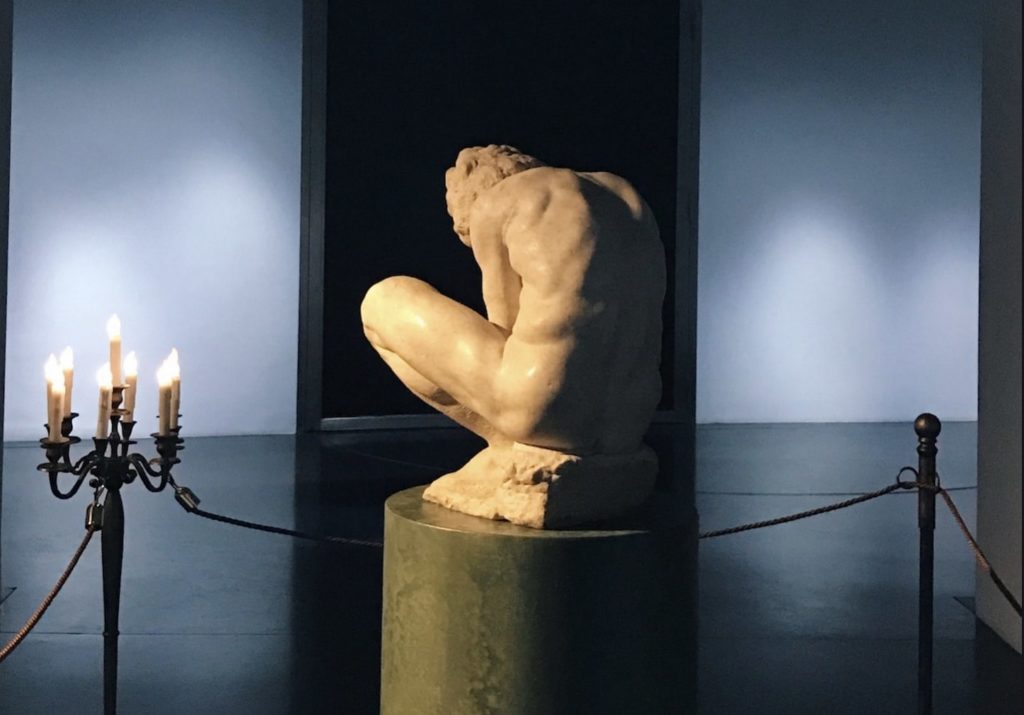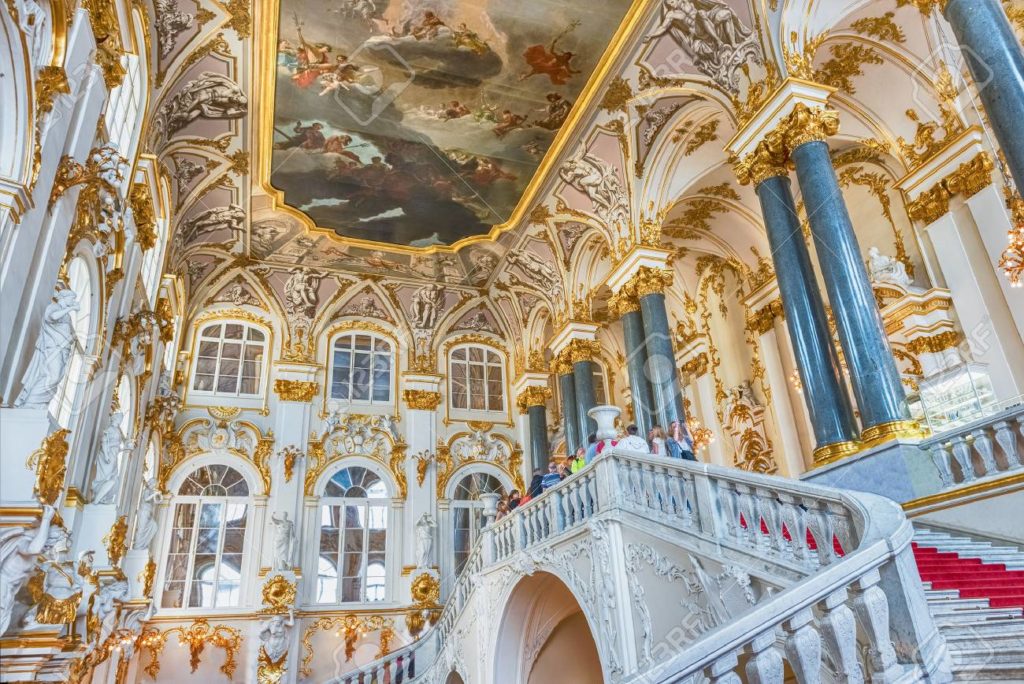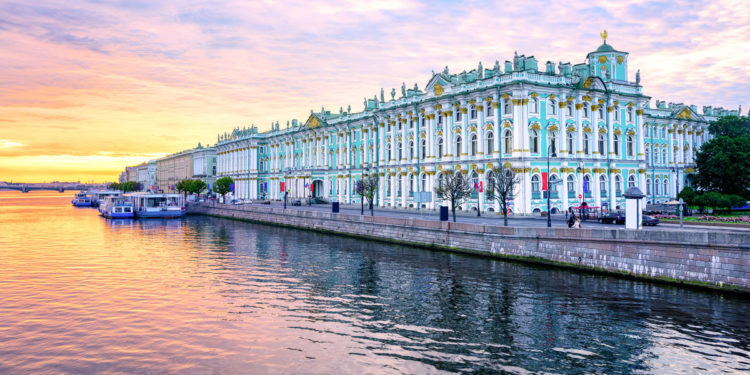If you love art, then the Hermitage Museum is the place to go. Located in St. Petersburg, the Hermitage museum is a vast collection of art pieces that even surpasses the Louvre.
Its magnificent cannot be matched, not even by the Sistine Chapel and even the Prussian Parks. This is because the Hermitage was once the great palace of the Russian Tsars. The entire palace is so vast, that it even holds nearly three million art pieces. To put it briefly, it will take you days before you fully explore each room and examine each art piece.
With so many options at your disposal and so many things for you to see, we’ve decided to come up with a list of the best ones. If you are planning a trip to the Hermitage, these are the art pieces that you must see.
1. Michelangelo’s Crouching Boy

Everyone knows Michelangelo and everyone recognizes his work. The Renaissance period saw artists and sculptors create their fines work. Safe to say, this period can be described as the “industrial revolution for the art world”.
One of the most popular sculptors and painters of this period is Michelangelo. His finest work, the Crouching Boy, is a thing of beauty. A statue made out of marble that portrays the nude boy couching with his head down. Michelangelo has his best paintings and sculptures spread across many museums, and the Crouching Boy is exclusive to the Hermitage, along with it being the only art from him.
2. Statues of Atlantes

The Statues of Atlantes are massive pieces of work that are located outside the New Hermitage building. They are placed to effectively “guard” the Imperial museum. Made from granite, the ten Statues of Atlantes attract many visitors each year.
They are absolutely massive and have excellent attention to detail. A single toe of the statue can be bigger than a grown man’s entire palm, so you can imagine how huge they are.
Each statue holds its hands above their heads as if they’re holding the museum itself.
3. Treasure Gallery

The Treasure Gallery is like nothing you’ve ever seen before. This entire room is dedicated to holding some of the most magnificent riches the world has to offer.
It houses jewelry from all ages, all cultures, and the bases of the room showcases the Russian Imperial Family’s own riches.
Here, you can find jewelry from Ancient Greeks, Royal Scythians, Chinese Dynasties, Eastern ceremonial weapons, Indian, Iranian, and even Roman riches.
The Treasure Gallery has multiple rooms that are dedicated to a particular time and culture.
4. Raphael’s Madonna Conestabile

Raphael is yet another Renaissance artist that has graced our history with magnificent pieces of art.
Yet another Renaissance painter, Madonna Conestabile is one of Raphael’s best artwork. Arguably the highlight of the Hermitage museum, Madonna Conestabile is a very small painting that attracts some of the biggest eyes of the world.
The painting itself isn’t finished, but that makes it even more magnificent. Accompanying the painting is the Holy Family, which resembles yet another painting of a person from one of the Royal Families.
You don’t need to love art nor history to be impressed by the Hermitage museum. However, if you want to learn more before making the trip, then we suggest you visit meisterdrucke.com where you can find literary any historical artist, painter, sculptor, and learn more about the various periods through history.
5. Malachite Room

The Malachite Room was the room where the wife of Nicolas I, Empress Alexandra Fiodorovna, used to draw. The entire room is decorated with mosaics, through a unique mosaic technique that was exclusive to the Russians. The room was also designed by some of Russia’s most prolific and famous designers and decorators.
The room has many artifacts and items from the previous ages, in all colors, and some even from gold.
6. The Main Staircase

The Main Staircase might not sound impressive or worthy of seeing, but trust us it is a unique sight that every person must experience.
made from embellished granite, the staircase of the Hermitageare a work of art. The columns of the staircase are from the classical period and accompanied by classical sculptures from marble and granite.
The staircase is huge, in various golden colors, and nothing alike exists in the world. The path of the staircase is covered with red carpet, whenever a foreign delegation or famous people are visiting.
7. Peacock Clock

This timeless artifact dates back to the 18th century and it is proof of mathematical ingenuity and mechanical brilliance.
The entire artifact consists of three singing birds. The birds include a peacock, a rooster, and an owl, and this artifact is probably the only surviving example of 18th-century mechanics and robotics.
The artifact serves the purpose of being a clock, and it starts the day with chime and various mechanical movements. Both the peacock and rooster have their singing periods, and both display some mechanical movement.
You can find the peacock clock in the Pavilion Hall. The unique of this device is unprecedented, and witnessing the mechanical movements and singing of the clock will be very tricky, as it is only turned on once every Wednesday.
8. The Room of Leonardo da Vinci

Leonardo da Vinci, a Renaissance master, has two of his greatest works in the Hermitage.
Both are displayed at the room appropriately labeled “the Leonardo da Vinci Room”, and the collection consists of the Little Madonna and the Benois Maddona.
The room itself is a work of art, and such perfection could only be graced with da Vinci’s work, said the architect Andrei Stakenshneider.
The room has a very colorful tone, which was made possible by combining jasper, lapis lazuli, marble, and granite. Both the walls and ceiling are colorfully decorated with paintings and each door that leads out and has a resembling decorative style.
Not only should this room be on your bucket list, but the works of art by Leonardo da Vinci are some of the museum’s highlights.
The Hermitage has many more attractions and rooms that everyone should visit. We mentioned that there are more than three million works of art, so singling out the best ones is a trickier task.




